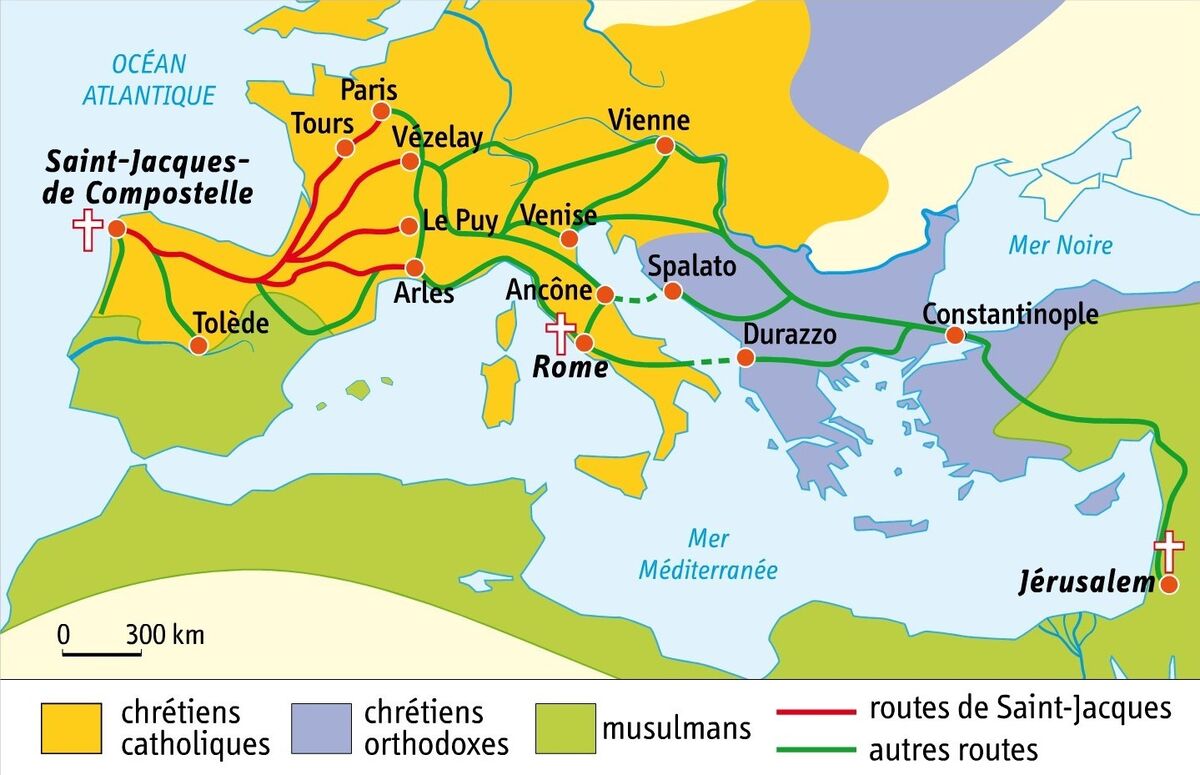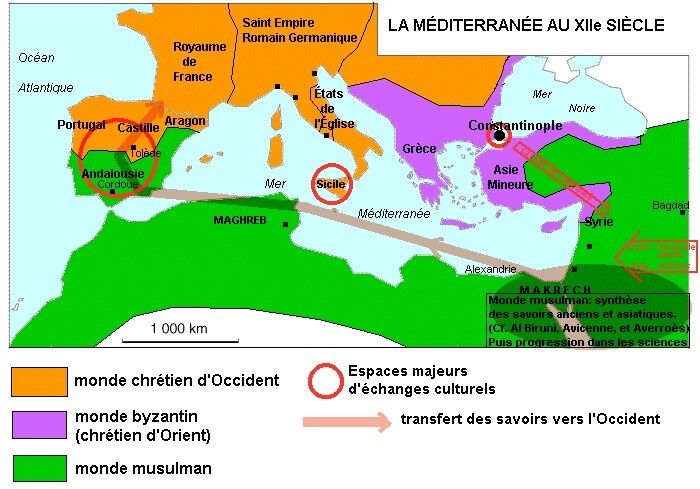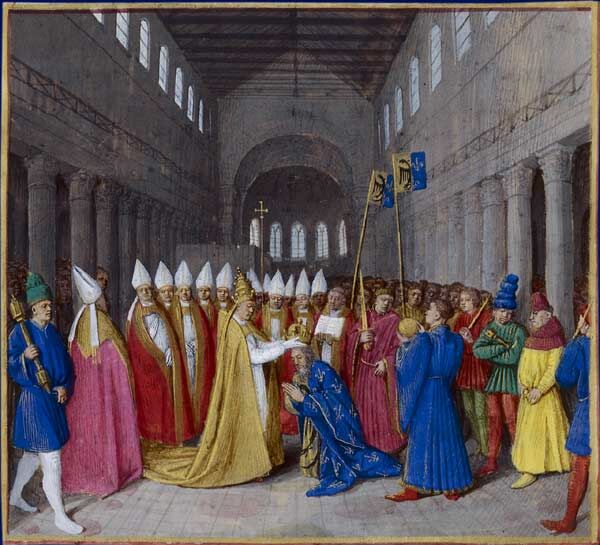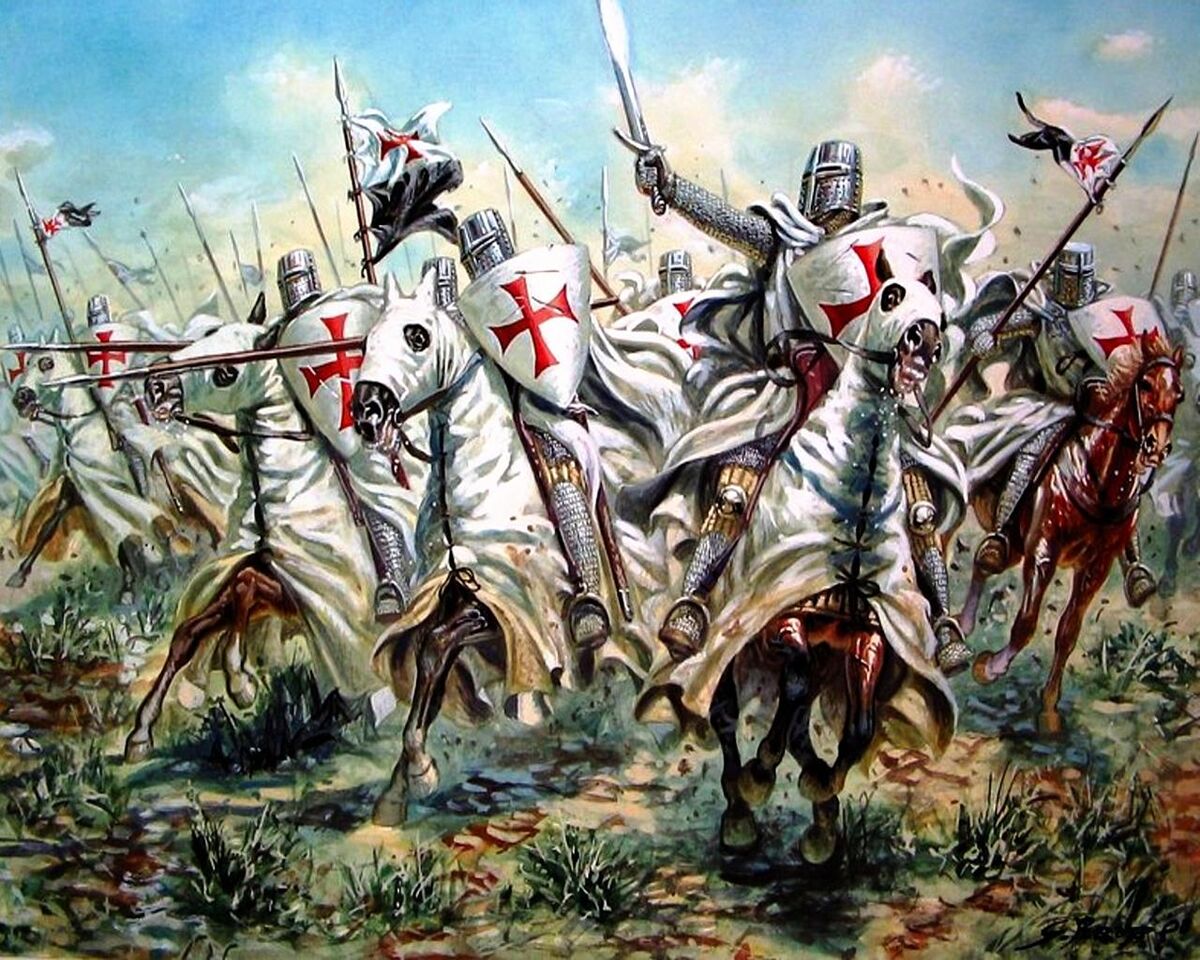A pilgrimage is a long walk undertaken by some of the Christian faithful to different destinations. Santiago de Compostela, Rome and Jerusalem are the three most popular pilgrimage destinations. These journeys, undertaken alone or in small groups over several months or even years, are dangerous and demanding because they are done on foot. As the roads are not safe, an attack by brigands threatens anyone who wanders along unprotected routes.

There are three main reasons for these pilgrimages: to venerate relics (the human remains of a Christian, such as the tomb of Jesus in Jerusalem), to do penance for one's sins or to obtain a favour in the case of illness. In fact, there are many reasons for making a pilgrimage; it is a personal decision that drives the believer to undertake this ordeal.
Europe in the Middle Ages was littered with political conflicts between the various kingdoms. In order to unite the West and impose his authority, Pope Urban II encouraged the lords and kings to fight the Muslim Turks who controlled Jerusalem in Palestine. For several years, the Turks had been preventing Christian pilgrims from travelling to Jerusalem. In 1095, the first Crusades began. Between 1095 and 1291, the Christians fought the Muslim Turks (whom they considered to be infidels) eight times.
The Crusades were eight major military expeditions undertaken in the Middle Ages by European Christians on the initiative of the Papacy. Their aim was to deliver the Holy Land, Jerusalem, and the other Christian states in today's Middle East from the hands of the Muslims.
The Crusades failed, with Christian lords and kings spending fortunes in their bid to conquer Jerusalem. After eight Crusades, the city still belonged to the Turks, a financial, religious and political failure. Despite this, the meeting of these two cultures had important and positive consequences for the kingdoms of Europe. Discovering exotic products (spices and fabrics) from the East, the western lords established trade links to ensure a steady supply of these riches. This trade led to a steady expansion of cities and trade in Europe.

In addition to these commercial exchanges, invaluable cultural influences brought new technologies and techniques (navigational instruments, windmills, etc.) to Europe. This new knowledge in medicine, mathematics and physics would change Europe in many ways for centuries to come.

Politically, the medieval period was characterised by division. With a few exceptions, such as the Carolingian Empire of 768 (founded by Charlemagne) and the Holy Roman Empire of 962 (founded by Otto I), the kingdoms of Europe were independent and proud of their differences. Despite these difficulties in unifying the West politically, certain elements succeeded in establishing a degree of unity: the Christian faith, which spread across almost the whole of Europe, religious institutions (the papacy, cathedrals, etc.) and the feudal system were all elements that bound the various European kingdoms together.
